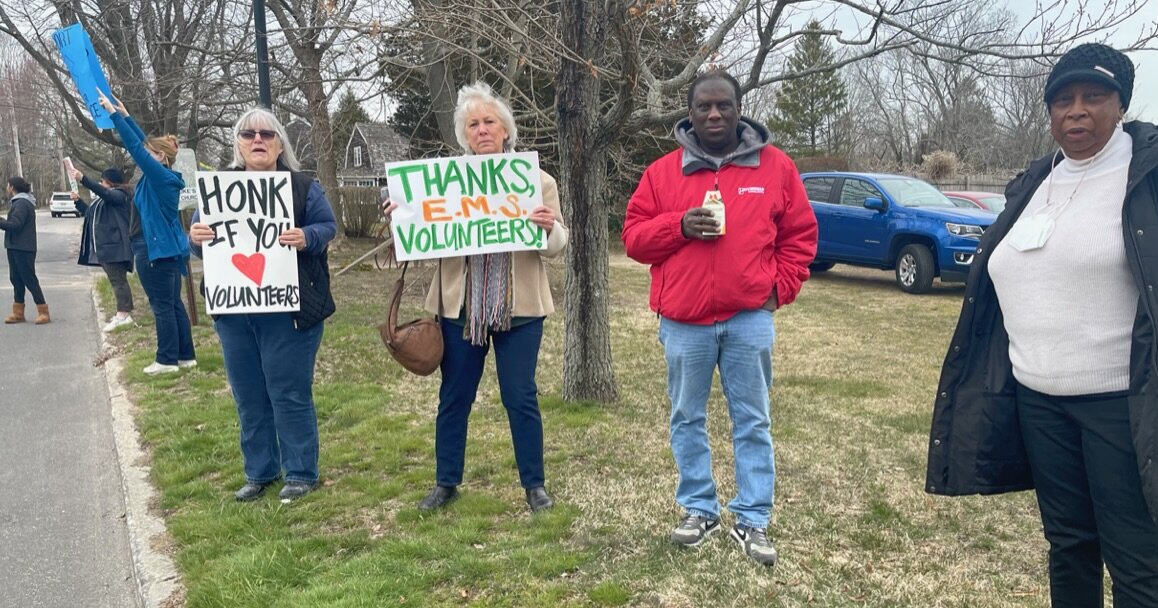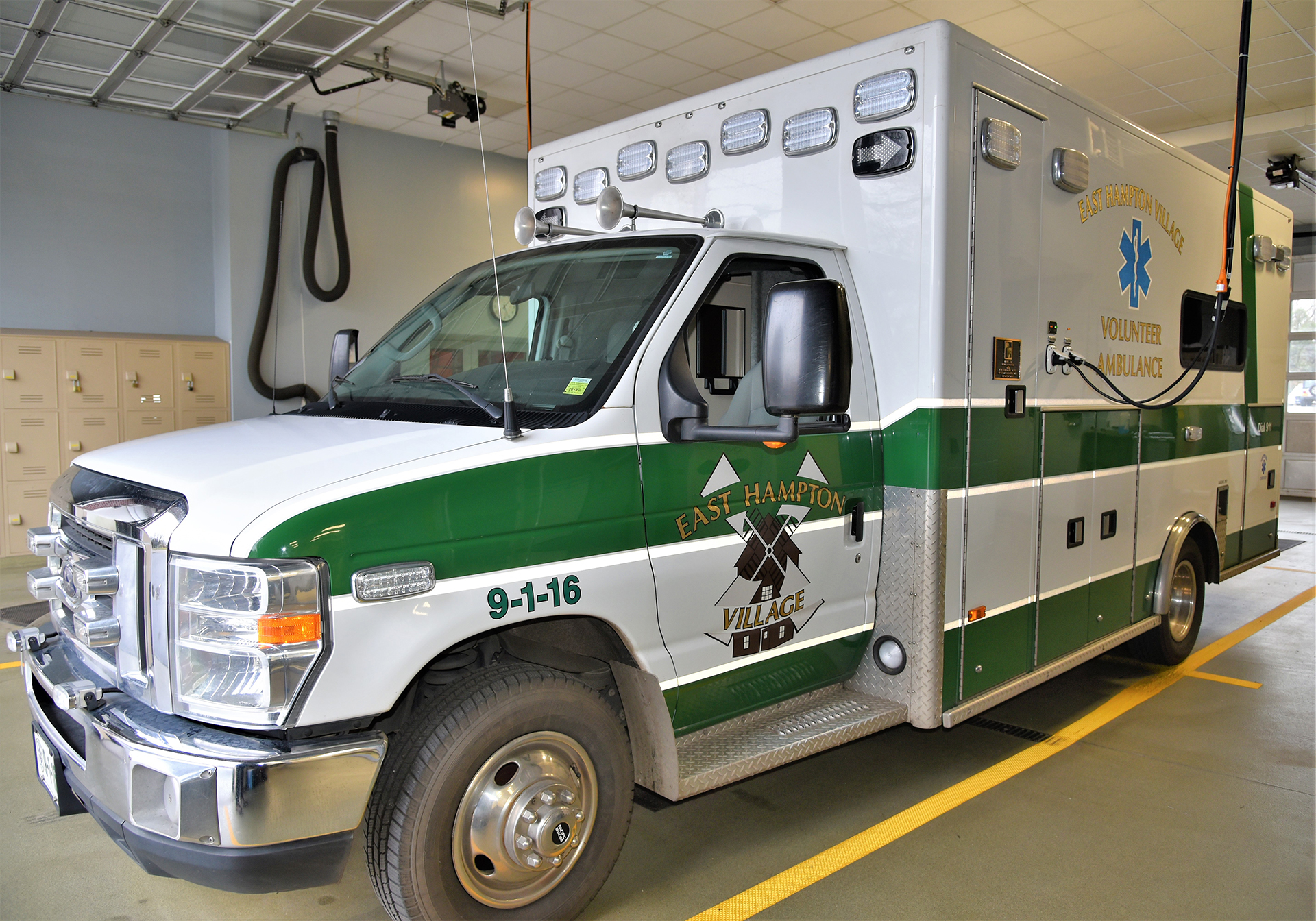East Hampton EMTs Clash With Village Board Over Proposed Ambulance Agency Takeover

More than a quarter of the East Hampton Village Ambulance Association’s 38 volunteer emergency medical technicians (EMTs) resigned in protest as the East Hampton Village Board considers taking over the agency’s operations.
Uproar over the plan spilled over on March 17 as protesters picketed outside East Hampton Village Hall and critics traded barbs with officials inside as the board debated the creation of the Department of Emergency Medical Service (EMS) that, if approved at its next meeting on April 21, would oversee the ambulance agency. In turn, the association would continue on as a fraternal organization tasked with recruiting and training members — a change that would undo a half century of independent EMS operations in the community.
“I’m not going to be held hostage by a group of people that don’t want any oversight from the village board who pays for the ambulances, who provides a budget, who is responsible to the residents,” East Hampton Village Mayor Jerry Larsen said at one point during an hours-long public hearing on the plan in which he debated critics of the move. “I can’t have a board that will not communicate with the village board. It doesn’t work. It’s impossible.”
The association is one of a handful of agencies — mostly local fire departments, although Sag Harbor also has a volunteer ambulance provider — that provide ambulance service in the Town of East Hampton. But like many volunteer-run agencies on Long Island, it has struggled with recruiting younger members as its crew grows older and had to hire paid paramedics to ensure it can keep up with calls. And like many entities on the East End, the influx of new residents amid the COVID-19 pandemic has challenged East Hampton’s ambulance service, not to mention the virus itself straining availability of members repeatedly exposed on the front lines.
“I don’t think this is a good idea, because you’re going to have a big recruitment problem,” Teri Bertha, a seven-year veteran volunteer EMT in East Hampton, told the board during the hearing. “You can’t get people to serve in restaurants where they make hundreds of dollars a night. And you’re going to pay them how much a night to come through that traffic?”
Anthony Carlo, the head of the village’s paid paramedic program who has been backing up the East Hampton volunteer EMTs since 2014, acknowledged that the volunteers know the community better than anyone — cutting down on response times that can mean the difference between life and death — while pleading for them to stay.
“Leaving and quitting, all that does is put your community at risk,” he said. “There’s always conflict. Always. But you know what happens? The ambulance always gets on the road, whether they hire more people or more (EMTs) come.”
East Hampton Village ambulance volunteers responded to an average of 1,280 calls — the bulk of which occur during the busy summer months — annually in the four-year span between 2018 and 2021, the most recent years for which statistics were available from the organization. Like any ambulance service provider, calls run the gamut from traumatic events such as injuries suffered in vehicle collisions and structure fires to aiding individuals with personal medical emergencies such as heart attacks and other life-threatening ailments. But population growth appears to be outpacing new recruits, as members often need to leave family functions to help strangers in their communities.

“The time constraints for many volunteers working one or more jobs, family and other obligations including continuing our training and renewing licensing, constitute a huge commitment,” Florence Stone, the public relations liaison for the East Hampton Village Ambulance Association, previously told Dan’s Papers.
Rumors flew that the proposed East Hampton ambulance changes were intended to start charging patients for the service, which is currently provided free of charge, but Mayor Larsen repeatedly insisted that there was no truth to that claim. Larsen, who was the village police chief before becoming the community’s top elected official, empathized with the frustrated first responders, but said the reason for the change came down to the association’s membership being able to vote against the village’s requested policy changes for the agency. The new ambulance department’s leadership would be appointed annually by and report to the village board.
“We need the ability of the chiefs to implement policies and procedures without being vetoed,” he said. “The new structure that we’re putting in place in no way impacts the ability of volunteers to provide the service that they love to do.”
While the village provides funding and equipment to keep the East Hampton village ambulance agency ready to respond on a moment’s notice, the nonprofit association also raises funds that help keep the service afloat. The association had $177,610 in revenue and $320,325 in assets, according to its tax records for 2020, the most recent year its finances were publicly available. A few of the association’s board members received $500 annual stipends for handling the time-consuming paperwork entailed in maintaining the agency, but leaders do not receive massive annual payroll found at some other nonprofits, records show.
Mary Ellen McGuire, the assistant chief of the East Hampton Village Ambulance Association, read at the meeting a statement for Mary Mott, the agency’s chief, who was unable to attend, but offered a prognosis for the agency’s future.
“You might be thinking, if it was difficult with a full complement of responders in the past, how would an EMS response look now?” she asked rhetorically, referring to the volunteers who quit. “How will the areas … be handled if the department has lost almost 30% of its membership when they walked away? The immediate considerations will be to hire additional paid staff to fill empty shifts, to advertise for new membership and to continue forward … with positive rebuilding strategies. Fortunately, this can now happen when all parties — both the village board and the ambulance — can communicate together to agree on the same goal and the best path for success in providing free hospital ambulance care to the community.”
Because despite the shock to the system, when someone calls 911 in East Hampton, a local ambulance will be on the scene to help.
East Hampton Village Ambulance Association Annual Calls
2018: 1,267
2019: 1,338
2020: 1,144
2021: 1,372
Source: EHVAA



